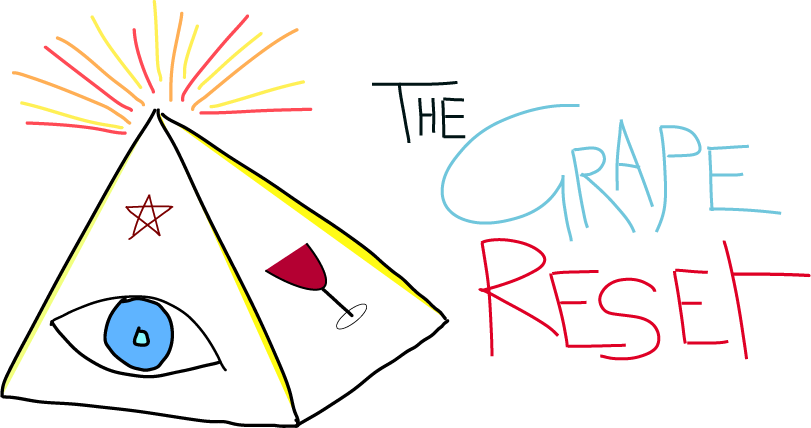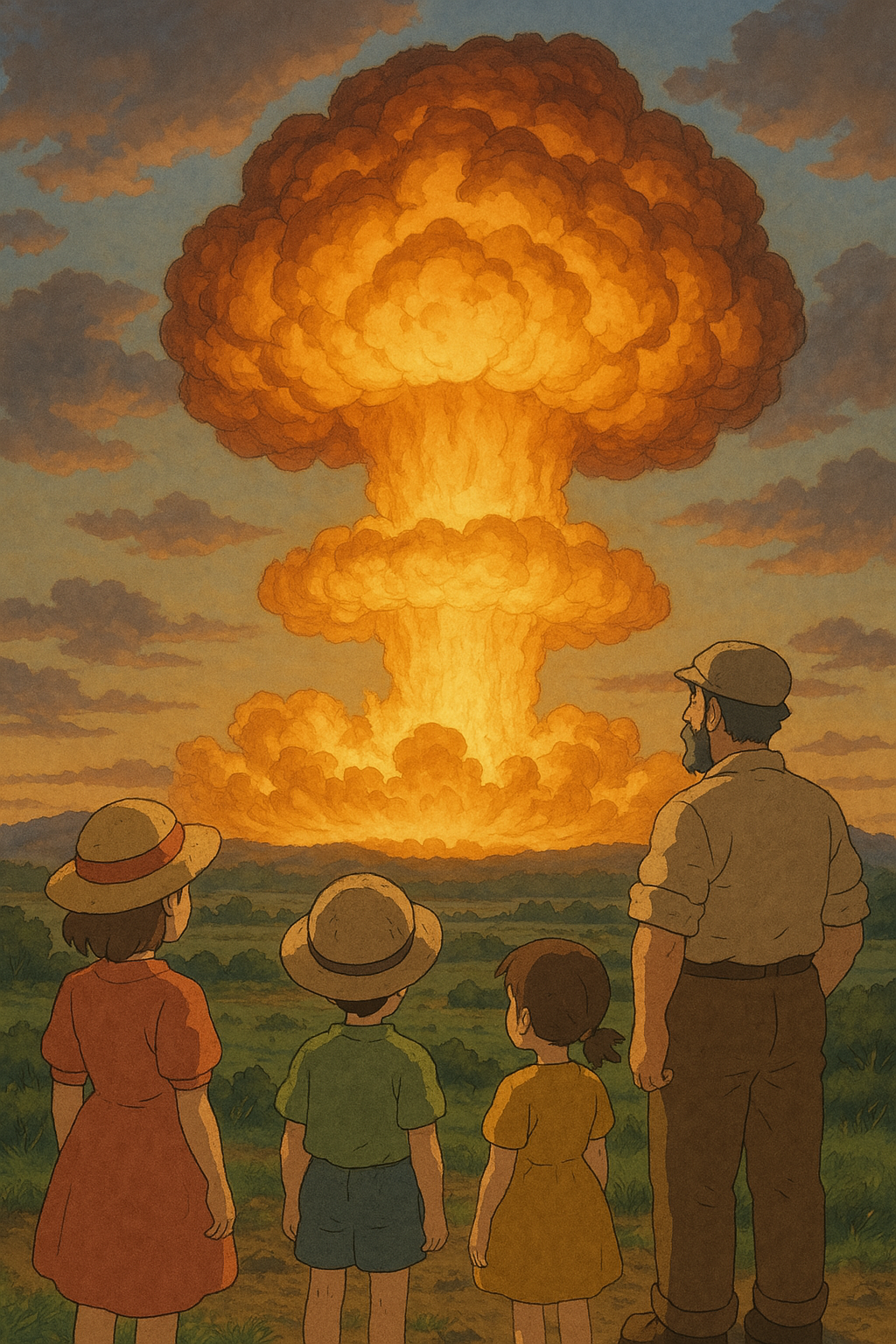Grape growing in a Nuclear winter.
Trump has bombed Iran, and in retaliation, an aircraft carrier has been sunk in the Gulf. And that’s it, we’re all screwed. What happens after? You’ve drunk all your good wine, and now you’ll need to make more. You’ve come out of the Mountain Shelter into a new nuclear world—how exhilarating! Once you’ve processed that, you sacrificed one of your children for space for the bottles you’d been saving for a special occasion.
But it’s not all ash laden clouds heavy with acid rain, there is a way , below i’ll break it down.
Potential Impact of Nuclear Conflict on Global Agriculture
The effects of nuclear warfare on agriculture could be severe, depending on the scale of the conflict.
Limited Nuclear Exchange: In the case of a regional nuclear conflict, the cooling effects could last anywhere from a few months to a few years, disrupting agriculture, weather patterns, and ecosystems.
Full-Scale Nuclear War: A large-scale conflict, such as between major nuclear powers, could cause a significant drop in global temperatures, with the worst effects lasting 5-10 years and lingering for decades.
Doomsday Seed Banking: Preserving Future Crop Varieties
In the event of a global disaster, the preservation of seeds for future agriculture becomes crucial. The following methods can help ensure long-term seed storage:
Freezer Storage: For long-term preservation, seeds should be kept in airtight, moisture-proof containers, such as vacuum-sealed bags or glass jars, and stored at a stable, low temperature.
Low Humidity: Seeds should be thoroughly dried (using a dehydrator or air-drying) to ensure they are moisture-free before storage.
Dark and Cool Storage: Seeds should be stored in a dark, cool environment away from fluctuating temperatures and light.
Resilience and Recovery: Plant Life After Chernobyl
The aftermath of the 1986 Chernobyl nuclear disaster left a scar on the landscape, but the resilience of nature in the Chernobyl Exclusion Zone has been remarkable. Despite the initial devastation caused by radiation exposure, plant life in the area has adapted and thrived in the absence of human activity. This guide explores the recovery and adaptation of plants in the wake of Chernobyl and discusses survival strategies for agriculture after nuclear events, drawing parallels with techniques used at Fukushima and the potential impacts of a nuclear disaster on a global scale.
The Initial Impact: 1986-1990s
When the Chernobyl reactor exploded, the immediate effects on the environment were catastrophic.
The Red Forest: The area of pine trees closest to the reactor absorbed deadly radiation, causing the trees to die almost immediately. The once-green pines turned a reddish-brown, leading to the creation of the Red Forest.
Genetic Mutations: Many plant species suffered genetic mutations. These mutations resulted in reduced growth, reproductive failure, and even the disappearance of some species from the most contaminated areas.
Sensitive Species Vanish: Plants particularly sensitive to radiation, such as certain mosses and lichens, were eradicated from the most contaminated zones in the Exclusion Zone.
Long-Term Recovery: 1990s to Present
As time passed, nature showed its remarkable ability to heal and adapt in the aftermath of the disaster.
Rapid Regeneration: Plant life, especially grasses, bushes, and trees, regenerated faster than expected. The lack of human interference allowed forests to expand, reclaiming abandoned villages and buildings.
Adaptation to Radiation: Certain plant species have developed unique mechanisms to repair the DNA damage caused by radiation. These adaptations have allowed them to survive in environments once thought inhospitable.
Fungal Symbiosis: Some trees in the Exclusion Zone have formed symbiotic relationships with fungi. These fungi absorb radioactive elements from the soil, helping the trees cope with the radiation.
Biodiversity Increase: With no human activity, rare and even endangered species have flourished. The absence of human intervention has allowed many plants that struggled before the disaster to return, taking advantage of the now-abandoned landscape.
Farming and Agriculture After a Nuclear Event
Agriculture in areas affected by nuclear radiation is challenging but not impossible. Various strategies have been developed to help plants survive in these environments.
Farming Techniques Post-Chernobyl
Potassium Fertilizers: One of the key strategies is the use of potassium fertilizers, which block the uptake of radioactive cesium by crops. Several natural materials are rich in potassium and can be used in farming:
Wood Ash: Contains about 5-7% potassium and provides calcium and micronutrients.
Kelp Meal/Seaweed: Provides 4-13% potassium and can help boost soil health.
Compost & Manure: Well-aged manure from poultry or cattle contains potassium, and food scraps composted into soil can also contribute.
Sulphate of Potash Magnesia: A natural mineral containing about 22% potassium, as well as magnesium and sulfur.
Fukushima and Radiation Management in Agriculture
In 2011, the Fukushima disaster led to similar concerns about food safety and soil contamination. Farmers adjusted by:
Soil Testing: To reduce radioactive absorption, soil pH levels were adjusted.
Hydroponic and Greenhouse Farming: To minimize radiation exposure to crops, some regions adopted these controlled farming methods.
Cold-Hardy Grape Varieties for Long-Term Survival
In the event of a nuclear disaster or long-term climate change, certain cold-hardy grape varieties may be able to survive the harsh conditions and ensure future wine production. Here are some of the most resilient grape hybrids:
White Hybrids (Cold-Hardy & Resistant)
La Crescent: Hardy to -35°C (-31°F); produces aromatic wines with citrus, apricot, and honey notes.
Vidal Blanc: Hardy to -25°C (-13°F); used for ice wine, offering bright acidity and tropical fruit flavors.
Seyval Blanc: Hardy to -26°C (-15°F); known for its crisp, citrusy flavors and versatility.
Itasca: Hardy to -30°C (-22°F); lower acidity, with notes of pear, melon, and mineral tones.
Louise Swenson: Hardy to -35°C (-31°F); produces light-bodied, floral wines with a slightly nutty taste.
Red Hybrids (Cold-Hardy & Resistant)
Frontenac: Hardy to -35°C (-31°F); known for bold cherry, blackberry, and chocolate notes.
Marquette: Hardy to -30°C (-22°F); a Pinot Noir-style variety with red fruit, spice, and good tannins.
Petite Pearl: Hardy to -32°C (-26°F); features deep color, smooth tannins, and low acidity.
Sabrevois: Hardy to -35°C (-31°F); known for earthy, dark fruit-driven flavors, making it great for blending.
Baco Noir: Hardy to -25°C (-13°F); recognized for its smoky, dark fruit flavors and solid structure.
So get collecting seeds now , no time to waste.


